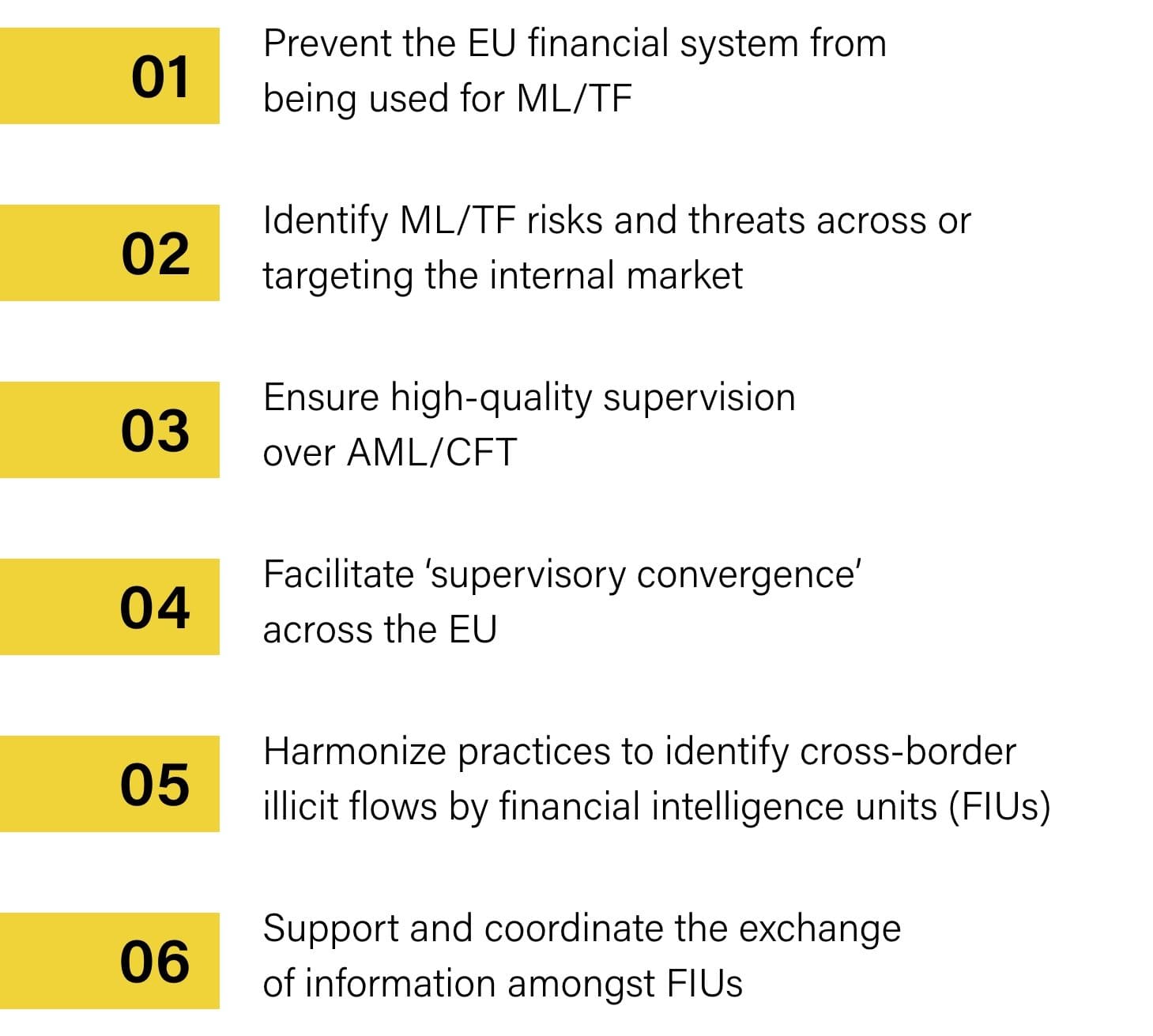A Guide to the European Union’s New AML/CFT Framework
Uncover all the proposed EU initiatives in detail, exploring their implications for compliance professionals to help firms proactively optimize their AML/CFT programs.
Download nowThe European Commission has written a memo detailing further aspects of the European Union’s new Anti-Money Laundering Authority (AMLA), which is expected to be fully resourced by the end of 2025, with direct supervision established by 2026. While the memo has not been made publicly available, media outlet euObserver has reported on its contents, highlighting the Authority’s intended scale, logistics, and facilities.
According to the euObserver, the memo outlines the following plans:
In July 2021, the AMLA was included as one of the four measures identified in the European Commission’s package of legislative proposals to strengthen the EU’s anti-money laundering and countering the financing of terrorism (AML/CFT) rules. The other three measures involved:
The European Commission identifies the objectives of the AMLA as the following:


The aim is to create a joint supervisory team between the EU Anti-Money Laundering Authority and local FIUs, to enforce a single rule book based on regulatory technical standards. AML investigations will be carried out jointly, and technical expertise will be shared in areas such as AI, IT solutions, and best practices for identifying suspicious transactions.
The EU is becoming increasingly serious about the importance of AML/CFT and is willing to undertake radical changes to improve its performance. It will look to the private sector for a similar attitude, and firms need to be vigilant and well-prepared with the right kinds of people, data, and platforms to identify and mitigate risks.
While individual member states may go beyond the scope of EU Anti-Money Laundering Authority directives, firms should expect greater consistency across the bloc going forward. Countries outside the EU, such as the UK, may also aim to align AML programs with the AMLA. Additionally, compliance staff should expect more detailed rules on CDD, beneficial ownership, and the powers and tasks of supervisors and FIUs.
Uncover all the proposed EU initiatives in detail, exploring their implications for compliance professionals to help firms proactively optimize their AML/CFT programs.
Download nowOriginally published 25 May 2023, updated 26 May 2023
Disclaimer: This is for general information only. The information presented does not constitute legal advice. ComplyAdvantage accepts no responsibility for any information contained herein and disclaims and excludes any liability in respect of the contents or for action taken based on this information.
Copyright © 2024 IVXS UK Limited (trading as ComplyAdvantage).